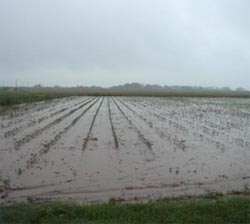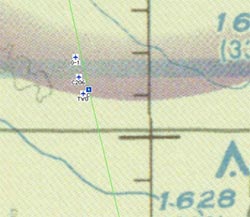
Not even record-setting precipitation could dampen the spirits of the Cloud and Land Surface Interaction Campaign (CLASIC) science team as the campaign at the ARM Southern Great Plains (SGP) site drew to a close on June 30. While the extreme weather near the end of the campaign hampered efforts to obtain some desired data of land-atmosphere energy exchange, it also provided other rare and valuable data sets for analysis. Fortunately, ideal conditions prior to the onset of the heavy rains provided plenty of opportunities to obtain surface and cloud property data directly related to the campaign’s scientific objectives. These included several coordinated A-Train satellite overpass validation missions involving all seven CLASIC aircraft and numerous stacked flights over the site.

Two satellite overpass validation missions occurred on June 12 and 19 under the desired conditions. Broken clouds on June 12 presented an ideal fair weather cumulus case. Several aircraft flew over each of the CLASIC surface “supersites” throughout the day, in addition to the afternoon satellite validation mission and SGP Central Facility overpass. On June 19, five aircraft flew in a stacked formation along the satellite track, converging at various altitudes above the target amid shallow broken clouds at the time of the overpass. In addition, two aircraft completed simultaneous survey patterns over the CLASIC domain and two other aircraft completed profiles over the SGP Central Facility and Little Washita surface sites.
As luck would have it, Oklahoma endured unprecedented amounts of rainfall in June, shattering a 70-year old precipitation record. An unexpected benefit of this weather was the opportunity to sample extremely clean air. On the last day of the campaign, the CIRPAS Twin Otter obtained a rare data set of a very clean atmosphere to contrast with the more normal aerosol-laden conditions in the area during this part of the year. Another unexpected data set resulting from the monsoon-like conditions was obtained on June 28, when the ER-2 aircraft flew above the Twin Otter at the edge of a “tropical” squall line, which deepened throughout the flight. A corresponding satellite overpass will allow ARM scientists to evaluate the effectiveness of the various radar retrievals under these types of conditions.
Throughout the 3-week campaign, enhanced surface instrumentation at the SGP Central Facility and CLASIC supersites obtained information about surface and atmospheric energy and carbon exchange. Intensive weather balloon launches from the SGP boundary facilities—8 per day for 10 consecutive days at the four boundary sites—supplemented the routine 4 per day launches at the SGP Central Facility and will be used to help characterize the large scale environment. Several carbon flux towers were added at the supersites, and two prototype scanning radar systems were deployed near the SGP Central Facility. These radars include an additional cloud radar frequency and advanced signal processing techniques that enable cloud microphysical processes to be observed with a new level of detail. The wide array of surface and airborne data obtained during CLASIC will be analyzed by climate scientists for years to come.

